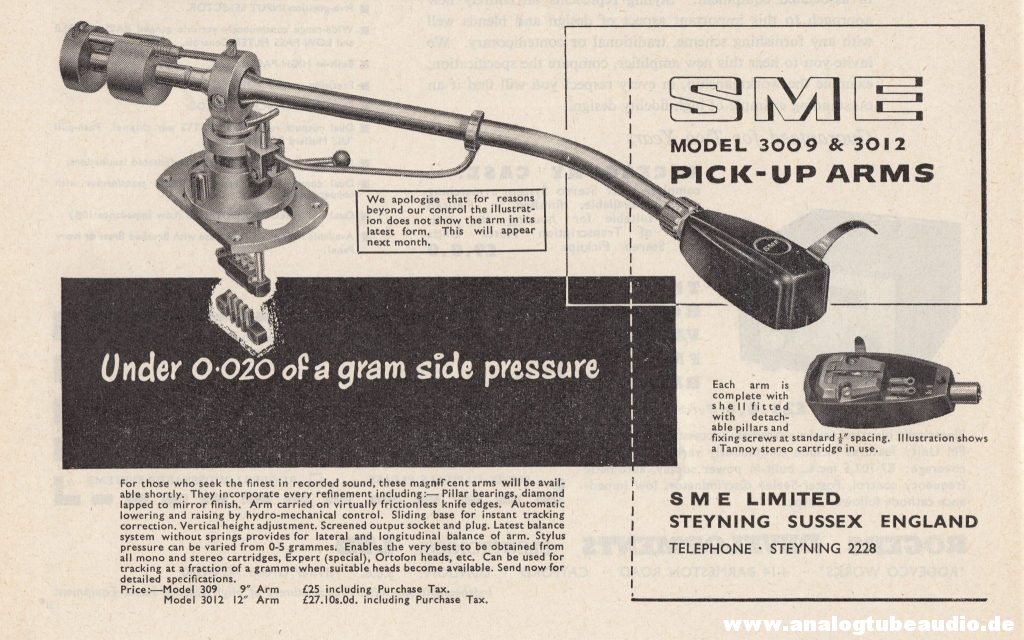
The first property is mass which opposes any change in motion. In common with any mechanical device the behaviour of a pick-up arm is governed by three properties of matter that also define the laws of motion. The following notes will help a better understanding of the problems and how they were resolved in this radically new design.

The result is a subtle loss of clarity, dynamic range and transient attack that can make the sound from even the best system tiring to listen to. Unless the pick-up arm holds the latter against even the minutest movement at audio frequencies the signal will be modified in some way. Reproduction can only be true therefore when all movement representing groove modulation is made by the armature to which the stylus cantilever is attached and none by the stator represented by the cartridge body. All cartridges employ relative motion between armature and stator portions of a generating system to produce the signal output. We recommend that it is easy to fit the Rega modified arms to modern Linns even thought the corner piece can some times foul the arm as you can carve off the offending wood with a Stanley knife or equivalent.The functioning of a pick-up arm appears simple but is in fact very complex. If you own a Linn we supply a pre-drilled arm board, identical in every respect to the Linn board but without the Logo or you can purchase a Linn armboard tor the Rega mount from Linn Products. This would give you infinite adjustment and improve the sound quality but see VTA adjuster to check whether you can fit this to your deck. If your existing cut out is too large you can screw on one of our VTA adjusters to the underside of the armboard. 31 mm of height between the top of the armboard and the top of the platter – this enables it to be fitted almost exactly without even using spacing washers. In terms of relative height, the arm needs approx. The advantage of gluing the washer to the armboard is that it also locates the arm in the correct position. However this can be hidden if you make up a large circular plate washer of black card, aluminium or other material and glue this to the armboard – the spacing washers we supply with a new arm have an outside diameter of 48mm and will formally fulfil this function for most situations ( the thickness of the washer is 2mm).

This will leave you with a hole to the side of the arm.

If you modify your current armboard you will need to cut out the board to take the Rega to the dimensions given above. The arm overhang to the rear is 50mm to the end of the counterweight stub. The length of the arm from its mounting hole centre to the cartridge end of the arm is 245mm. Old style Rega arms with threaded bases can rotate to be fixed at any angle.

The distance from centre of arm position to centre of platter spindle needs to be 221.7mm. You are best to use the arm itself as the template to mark and then drill these small holes ensuring that the arm is oriented at right angles to the front edge if the deck. The geometry and mounting dimensions for the new type 3 point mount Rega tonearms is identical to their older arms – In addition to the single large 24mm hole, the 3 point mounted Rega tonearms need 3 small holes for either wood screws or M3 Allen bolts. The centre of the Rega arm hole can be positioned anywhere on a radius arc 221.7mm from the platter spindle centre. Once the arm is inserted through this hole, it is then secured by a large nut on the underside of the board which clamps it on. The Rega arms fit into a singe hole in the armboard – 24mm or 25mm in diameter. If your arm is not a Rega it is certainly possible to fit the Rega tonearm to your deck but you may either have to modify your existing armboard or acquire a new one – (see a dealer for the second option).


 0 kommentar(er)
0 kommentar(er)
